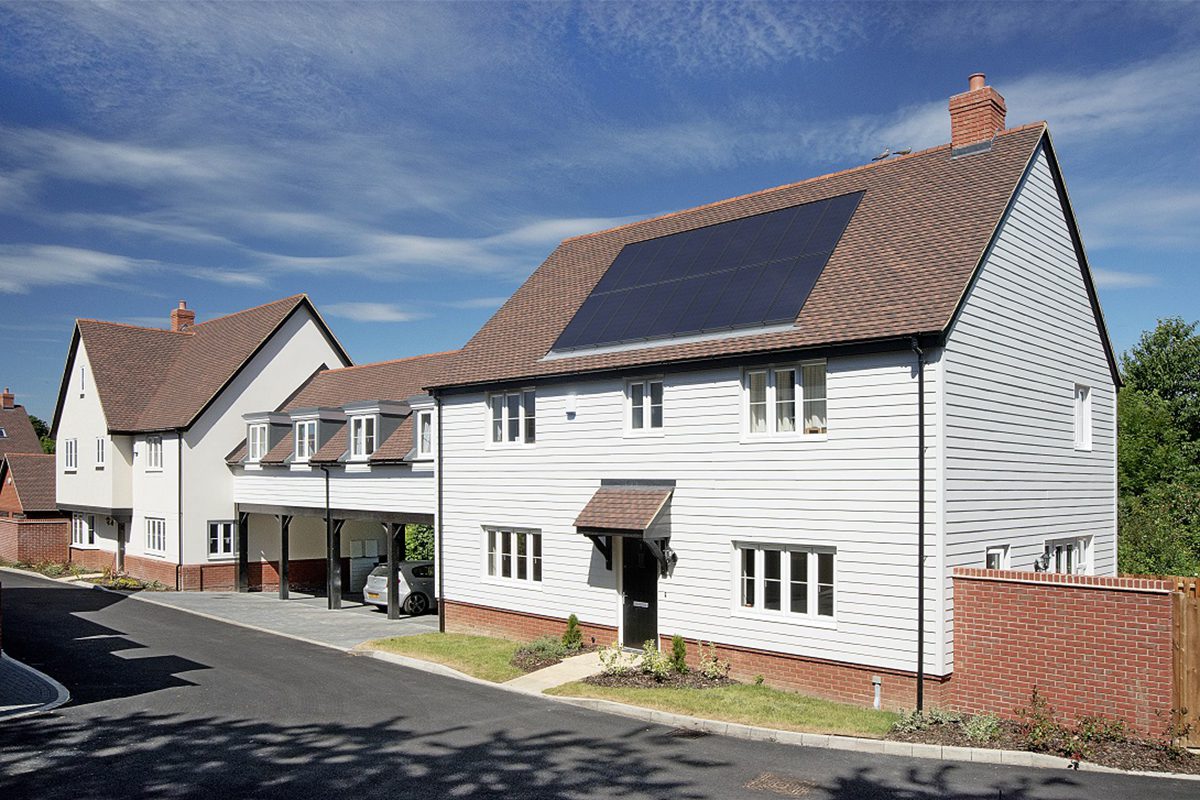Stuart Nicholson, roof systems director at Marley, explores how closer supply chain collaboration and an improved understanding of renewable technologies can help drive the sustainability agenda for architects and tackle domestic energy costs.
In association with![]()
The journey to 2050 net zero is underway and political leaders have clearly signposted the direction of travel. Part of the government’s holistic strategy to deliver a sustainable and low-carbon future for the nation, has been the introduction of changes to Part L of the Building Regulations to create lower carbon houses ahead of 2025’s Future Homes Standard. At that point, all newly constructed homes will have to be highly energy efficient, use low carbon heating solutions, such as Solar PV and heat pumps, and be zero carbon ready.
28 million homes in the UK* are acknowledged to be a major contributor to carbon emission damage. Making the nation’s housing stock more energy efficient is a pivotal component of the net zero strategy; one that puts the future specification of sustainable building and roofing solutions in the spotlight.
As a result, architects and specifiers must begin to deliver design answers that underpin the stringent carbon emission and sustainability targets the construction sector is now faced with. Decisions made now will define future success and the design thinking, which originates how dwellings will evolve post-Part L. This needs to be fully acquainted with the sustainable solutions that can be accessed, including roofing.
A focus on sustainable design solutions is therefore set to remain at the top of the agenda and act as a key driver. Consequently, the incorporation of solar PV as a renewable technology within roofscapes is increasingly being accepted as a practical, cost-effective and high-performing answer. One that can make a positive contribution to the current energy price crisis and lay the foundation for more energy- efficient homes required for the future.
We are seeing increasing evidence that interest in and appreciation of solar as a problem-solving renewable technology is on the rise. In exclusive research carried out with architects and specifiers, 40 per cent said they were aware of the benefits solar PV on roofscapes can deliver. Whilst previous concerns around cost, impact and aesthetics can now also be overcome.
Solar PV is more affordable than ever, with a typical system 60 per cent cheaper than it was a decade ago. What’s more, according to Energysavingtrust.org.uk, the installation of solar panels on roofscapes can reduce electricity bills by more than £500 per annum, depending where in the UK the property is located and how much time is spent at home.
Designing for Solar PV
From a design perspective, the ability to specify integrated and visually appealing solar PV systems, such as Marley SolarTile, alongside roof tiles as part of a whole roof system aesthetic, negates previous concerns about the bulky bolt-on appearance of solar panels.
Locations that are using solar PV solutions should focus on capturing as much sun as possible to maximise the benefit for low-carbon and low-cost energy generation. This means properties should preferably have south-facing roofscapes and be free of possible shadow interference from localised trees or other structures.
In addition, property designs should look to incorporate larger scale roof spaces so increased solar panel volumes can be integrated onto roofs to deliver optimum energy generation benefit.
Help at hand
There is plenty of help available for architects looking to drive up specification levels of solar on roofscapes as part of the sustained efforts to ensure sustainability is central to the design process going forward.
Online configurators and solar PV CPDs can help with initial estimation and understanding of the system. Technical support is available from Marley to assist with establishing a sustainable roof specification, design layouts, EPC ratings and SAP assessments for architects who want to access the benefits of solar technology for their clients, but who do not possess the in-depth product knowledge to do so.
Closer collaboration across the supply chain is already in evidence. As time pressures continue to impinge on availability, the ability of architects to source from a single roof system supplier, ensures they are involved at an early stage of the specification process, and can benefit from the reassurance of the 15-year guarantee that comes, for example, with Marley’s full roofing system. This is an approach increasingly being adopted.
Taking advantage of current roofing technical expertise, solar PV product training and project support should be a strategic imperative for the architects and specifiers looking to proactively deploy the sustainable and energy efficient answers the nation’s housing stock requires.
Contact Details
For more information on Marley SolarTile, please visit the Marley website.
Source: Architecture Today





